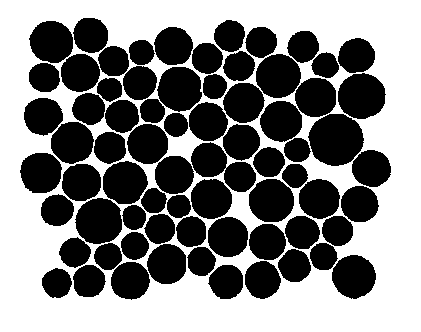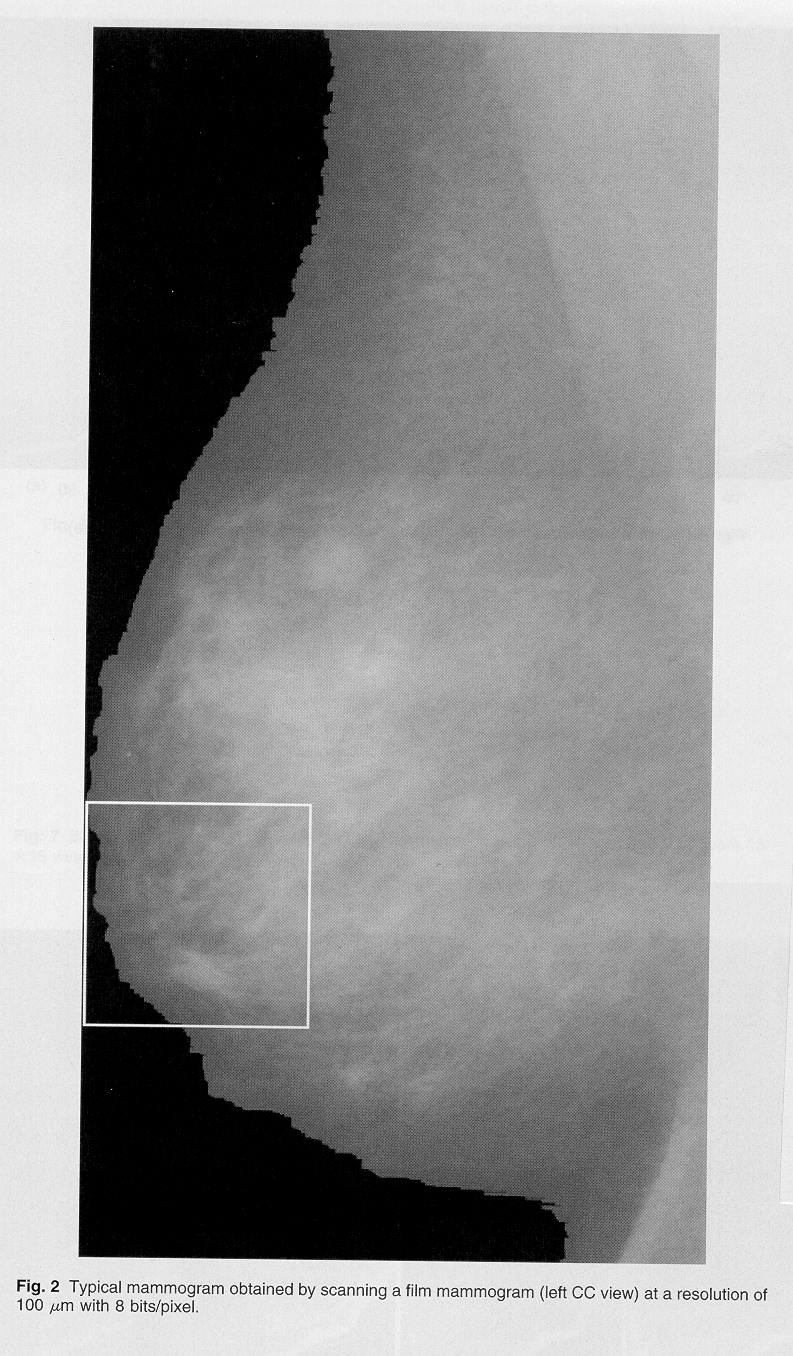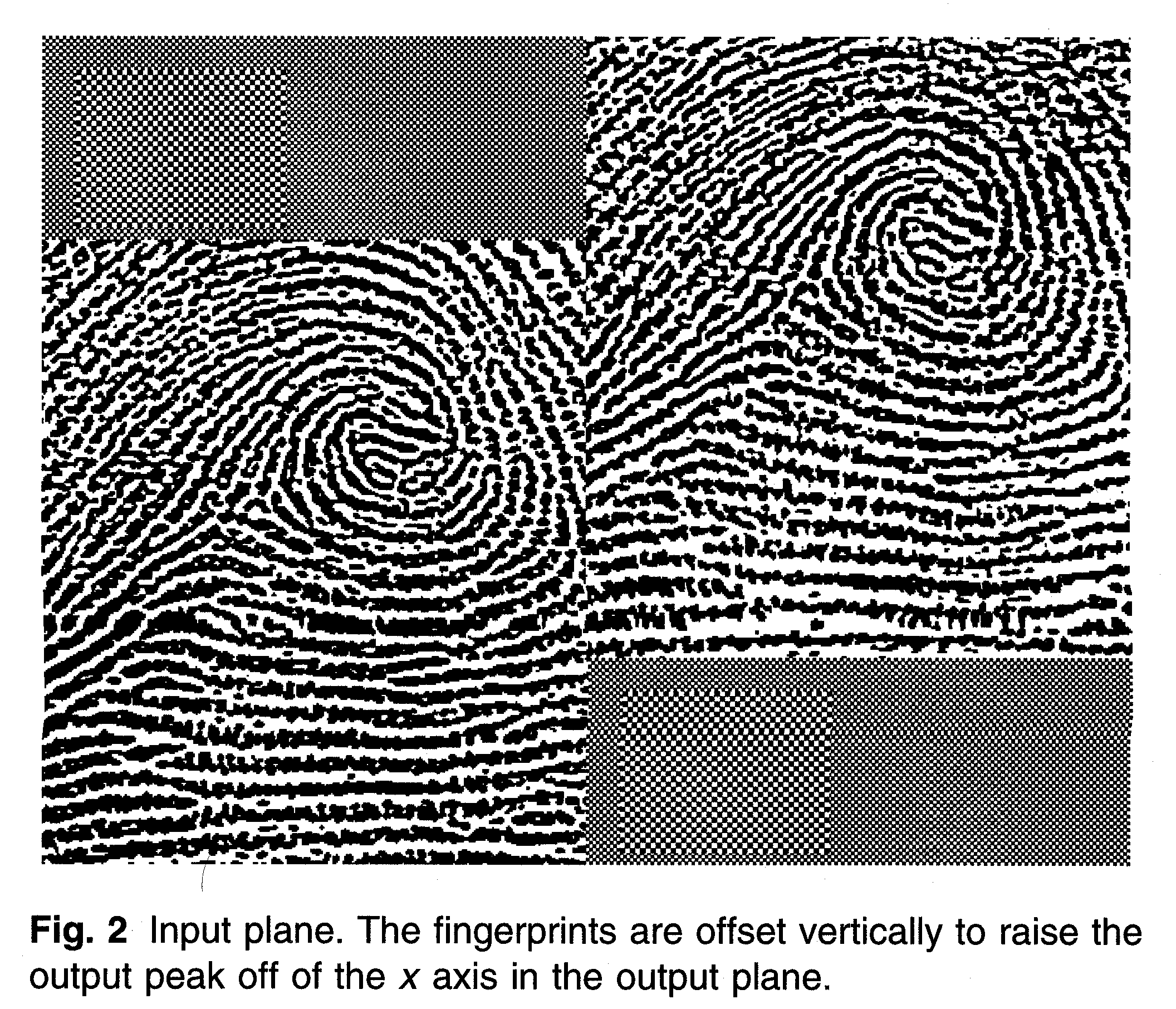|
DS420 Winter '99 |
Vivaldi |
Vadim V. Krongauz |
Welcome
The image processing, storage and transport is one of the developing fields in Computer Science. The tasks of visual object recognition and differentiation performed by living organism routinely and very quickly take a substantial instrumental and computational sophistication
The simplest tasks of quantitatively measuring the size and size distribution of black objects on white background (Fig. 1) (M. Grinberg & V. Krongauz, J. Imaging Science, 35(3) (1991) 158; Krongauz, Schmid and Vandeberg, Progr. Org. Coatings, 26 (1995) 145, Krongauz and Kocher, J. Appl. Polymer Sci., 65 (1997) 1271) require the use of highly specialized software. One of the best is Optimas package.

Figure 1. Black Objects on White Background
When object has to be differentiated by its appearance and shape, and some features extracted and identified in the image like in medical images (Fig. 2) or in case of security ID (Fig. 3) and military target recognition the problem of image processing becomes even more complex T. Aach, U. Schiebel and G. Spekowius, J. Electron. Imaging, 8(1) (1999) 7

Figure 2. Mammogram Image

Figure 3. Fingerprint image
Electronic color reproduction and subsequent transport through the Web and print (Fig. 4, DuPont Cromalin Standard Target) becomes a nightmare considering difference in pixel setups, file formats difference, etc. Recent catalogue sales like that by Avon do not guarantee that the color of the Passion Red lipstick seen by one customer is the same as by another (B. Gram-Reefer, "Color Management on the Web", "Photo-Electronic Imaging", 4 (1997) 28) Considering the disaster of different color formatting (different color spaces) there are some attempts to standardise Web color management

Fig. 4 DuPont Cromalin Standard Target
Three-Dimensional Images and their Web transfer create even more problems. Recently World Wide Web Consortium is attempting to incorporate standardized 3-D management through markup tags through XML based standards by creating yet another monstrous language Scalable Vector Graphics (SVG) and another, Extensible3D (X3D).
The problem of large size file transfer through the network is well known. It is particularly painfully evident, when high resolution images are being transported or accessed
There are recent attempts to incorporate image compression and decoding into Java compilers. A recent article by Andrew Wilson ("Vision Systems Design:, January 1999, 7-8) reviews some aspects of this new development and provides an access to the following websites:
Image filters, demos, source code for image display and transfer using Java, histogram computations by G. Kiennast, Graz University of Technology(Austria)
Image processing software from the University of Kansas, developed by E. Metz (currently at Nokia Telecommunications Tx
One can extract from the University of Delaware researcher Chunyene Liu's site Java based software for image processing , and use unzip -U for UNIX and WinZip for PC
There was a Java applet developed by Lynn Li (Rush Presbyterian -St. Luke's Medical Center, Chicago, ILL) to display GIF or JPEG images in Netscape, Explorer or Hot Java
A very good image editing and processing applet is Java PhotoLab 1.3 that includes two-dimensional filters, Wiener filtering, edge detection, and interpolation
For those interested in image enhancement, restoration , distortion, color processing etc. using Java and X. Zhu (University of Nevada, Reno, NV) developed JImage and JPIP image processing packages
If Internet connection is not desirable during the image processing, the package developed by G. Karantalis of Cardiff University (Cardiff, Wales), named Cyber Image Processing (CIP), can be downloaded. It can be used independently.
Image morphology and low and high-pass filtering Java applets were developed by G. Simon and M. Chatterjee (Pennsylvania State University, University Park, PA).
How does one learn about Imaging and Images? One way is to attend courses offered by The International Society for Optical Engineering (SPIE) , and read appropriate publications.
![]()